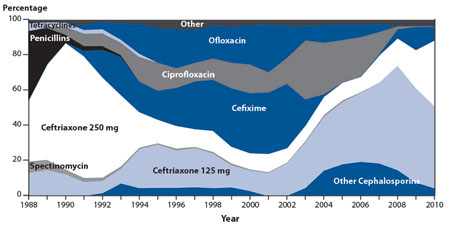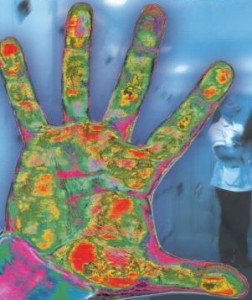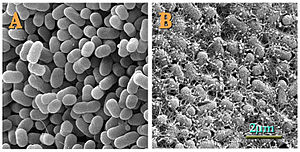Andrew Pollack, writing in the print editions of The New York Times wrote “Mosquito Bred to Fight Dengue Fever Shows Promise in Field  Trial,” published on October 31st, 2011. We’ve been planning on switching to an all-digital subscription, but haven’t sorted out yet which plan. So we’ve often got hard copy (i.e. the print edition) in the house, often with notes about posting. But in order to reduce transcription error, and speed things up, our posts will be based on the digital edition. However, in this case searching for Pollack’s 31 October piece, we found Concerns Raised about Genetically Engineered Mosquitoes, dated 30 October 2011. An initial line-by-line comparison of the two pieces (the first few grafs) suggest they’re close, if not identical.There’s nothing sinister happening here; it may merely be that, after posting the piece on NYTimes.com, editors thought better of the headline. (If you’re confused about the sequence, bear in mind that the earlier piece, which made print editions dated 31 October, had to be committed to print on the evening of the 30th; the on-line edition may have been originally posted on the 30th, but revised any number of times since its posting.
Trial,” published on October 31st, 2011. We’ve been planning on switching to an all-digital subscription, but haven’t sorted out yet which plan. So we’ve often got hard copy (i.e. the print edition) in the house, often with notes about posting. But in order to reduce transcription error, and speed things up, our posts will be based on the digital edition. However, in this case searching for Pollack’s 31 October piece, we found Concerns Raised about Genetically Engineered Mosquitoes, dated 30 October 2011. An initial line-by-line comparison of the two pieces (the first few grafs) suggest they’re close, if not identical.There’s nothing sinister happening here; it may merely be that, after posting the piece on NYTimes.com, editors thought better of the headline. (If you’re confused about the sequence, bear in mind that the earlier piece, which made print editions dated 31 October, had to be committed to print on the evening of the 30th; the on-line edition may have been originally posted on the 30th, but revised any number of times since its posting.
Reseaarchers on Sunday reported initial signs of success from the first release into the environment of mosquitoes engineered to pass a lethal gene to their offspring, killing them before they reach adulthood. The results, and other work elsewhere, could herald an age in which genetically modified insects will be used to help control agricultural pests and insect-borne diseases like dengue fever and malaria. But the research is arousing concern about possible unintended effects on public health and the environment, because once genetically modified insects are released, they cannot be recalled. Authorities in the Florida Keys, which in 2009 experienced its first cases of dengue fever in decades, hope to conduct an open-air test of the modified mosquitoes as early as December, pending approval from the Agriculture Department. “It’s a more ecologically friendly way to control mosquitoes than spraying insecticides,” said Coleen Fitzsimmons, a spokeswoman for the Florida Keys Mosquito Control District. The Agriculture Department, meanwhile, is looking at using genetic engineering to help control farm pests like the Mediterranean fruit fly, or medfly, and the cotton-munching pink bollworm, according to an environmental impact statement it published in 2008. Millions of genetically engineered bollworms have been released over cotton fields in Yuma County, Ariz. Yet even supporters of the research worry it could provoke a public reaction similar to the one that has limited the acceptance of genetically modified crops. In particular, critics say that Oxitec, the British biotechnology company that developed the dengue-fighting mosquito, has rushed into field testing without sufficient review and public consultation, sometimes in countries with weak regulations.
More from Pollacs’s piece (both versions):
Dr. Alphey said the technique was safe because only males were released, while only females bite people and spread the disease, adding that it should have little environmental impact. “It’s exquisitely targeted to the specific organism you are trying to take out,” he said.
The company is focusing on dengue fever rather than malaria because a single mosquito species is responsible for most of its spread, while many species carry malaria. Also, unlike for malaria, there are no drugs to treat dengue, and bed nets do not help prevent the disease because the mosquito bites during the day. There are 50 million to 100 million cases of dengue each year, with an estimated 25,000 deaths. The disease causes severe flulike symptoms and occasionally, hemorrhagic fever. The Oxitec technique, however, is not foolproof. Alfred M. Handler, a geneticist at the Agriculture Department in Gainesville, Fla., said the mosquitoes, while being bred for generations in the lab, can evolve resistance to the lethal gene and might then be released inadvertently.
Todd Shelly, an entomologist for the Agriculture Department in Hawaii, said in a commentary published on Sunday by Nature Biotechnology that 3.5 percent of the insects in a lab test survived to adulthood despite presumably carrying the lethal gene.
Also, the sorting of male and female mosquitoes, which is done by hand, can result in up to 0.5 percent of the released insects being female, the commentary said. If millions of mosquitoes were released, even that small percentage of females could lead to a temporary increase in disease spread.
Oxitec and a molecular biologist, Anthony A. James of the University of California, Irvine, say they have developed a solution — a genetic modification that makes female mosquitoes, but not males, unable to fly. The grounded females cannot mate or bite people, and separating males from females before release would be easier.
In a test in large cages in Mexico, however, male mosquitoes carrying this gene did not mate very successfully, said Stephanie James, director of science at the Foundation for the National Institutes of Health, which oversaw the project.
Experts assembled by the World Health Organization are preparing guidelines on how field tests of genetically modified insects should be conducted. Proponents hope the field will not face the same opposition as biotechnology crops.
See also







